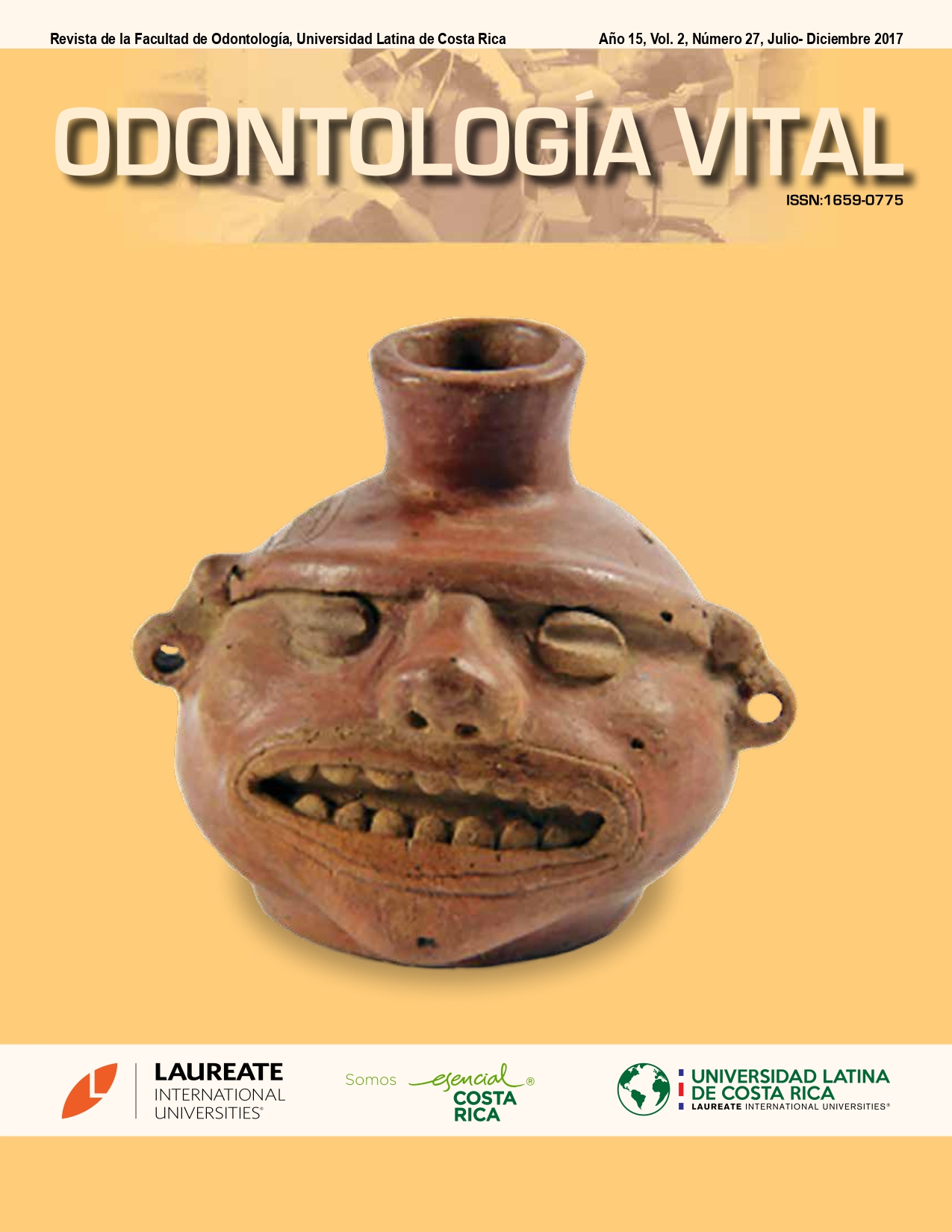Dental management of patients with cerebral palsy through the binaural beats
Basado en la investigación: “Análisis de la influencia de los sonidos propios del ambiente odontológico y los sonidos binaurales en el manejo de la ansiedad de los pacientes con parálisis cerebral infantil del Hogar Divina Misericordia en La Aurora de Alajuelita, entre setiembre 2015 y abril 2016”
DOI:
https://doi.org/10.59334/ROV.v2i27.211Keywords:
Dental management, cerebral palsy, binaural beats, dental environment soundsAbstract
The most important objective of the research was to demonstrate the efficiency of binaural beats in the dental consultant as a current technique to reduce anxiety in child patients with cerebral palsy, also prove that the dental environment generates fear in pediatric patients.
To achieve quantify the heartbeats of the children during three different moments throughout the investigation, we used fingertip pulse oximeter, a mp3 player and headphones. We evaluate the medical histories of each children from Hogar Divina Misericordia, as well the medicines they consume daily and diseases related with cerebral palsy. We observed different types of reactions when using each of the sounds, some cried and got anger until they get relax and happy.
Finally the results in this research show the benefits and the veracity of the binaural beats while on the contrary are expose to the sounds of the dental environment as a distracting and unfavorable method during dental visits.
Downloads
References
Ansiedad y miedos en la infancia. (s.f.). Recuperado el 29 de setiembre de 2015, de http://www.clinicadeansiedad.com/02/250/Ansiedad-y-miedos-en-la-infancia.htm
Argüelles, P. P. (2008). Parálisis cerebral infantil. Protocolos Diagnóstico Terapeúticos de la AEP: Neurología Pediátrica, 271-277.
Pérez, A., Pérez, G. (2015). ¿Cómo trabajar con pacientes especiales? Dental Tribune.
Astorga, L.F.. (26 de octubre de 2013). Costa Rica les falla a las personas con discapacidad. La Nación , pág. 1.
Ley 7600 Igualdad de oportunidades para las personas con discapacidad. (29 de mayo de 1996). Diario Oficial La Gaceta No.102 , pág. 32.
Oster, G. (s.f.). Auditory beats in the brain. 1-19.
SonidosBinaurales.com. (2011-2016). Recuperado el 26 de julio de 2015, de ¿Qué es la música binaural?: http://www.sonidosbinaurales.com/la-musica-binaural/
SonidosBinaurales.com. (s.f.). Ondas cerebrales. Recuperado el 26 de julio de 2015, de http://www.sonidosbinaurales.com/ondas-cerebrales/
Woodward, M. (2014). Entrainment plus: Binaural beats and isochronic tones. Pág. 1-14
Downloads
Published
Issue
Section
License
Copyright (c) 2017 Alina Conte Chan

This work is licensed under a Creative Commons Attribution 4.0 International License.
Authors who publish with Odontología Vital agree to the following terms:
- Authors retain the copyright and grant Universidad Latina de Costa Rica the right of first publication, with the work simultaneously licensed under a Creative Commons Attribution 4.0 International license (CC BY 4.0) that allows others to share the work with an acknowledgement of the work's authorship and initial publication in this journal.
- Authors are able to enter into separate, additional contractual arrangements for the non-exclusive distribution of the Odontología Vital's published version of the work (e.g., post it to an institutional repository or publish it in a book), with an acknowledgement of its initial publication.
- Authors are permitted and encouraged to post their work online (e.g., in institutional repositories or on their website) prior to and during the submission process, as it can lead to productive exchanges, as well as earlier and greater citation of published work.







